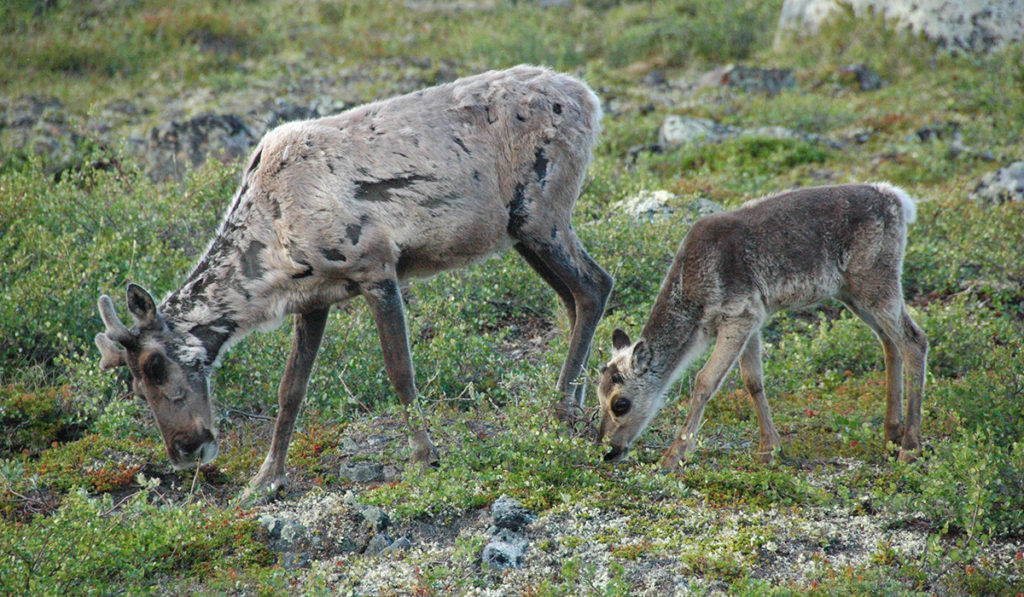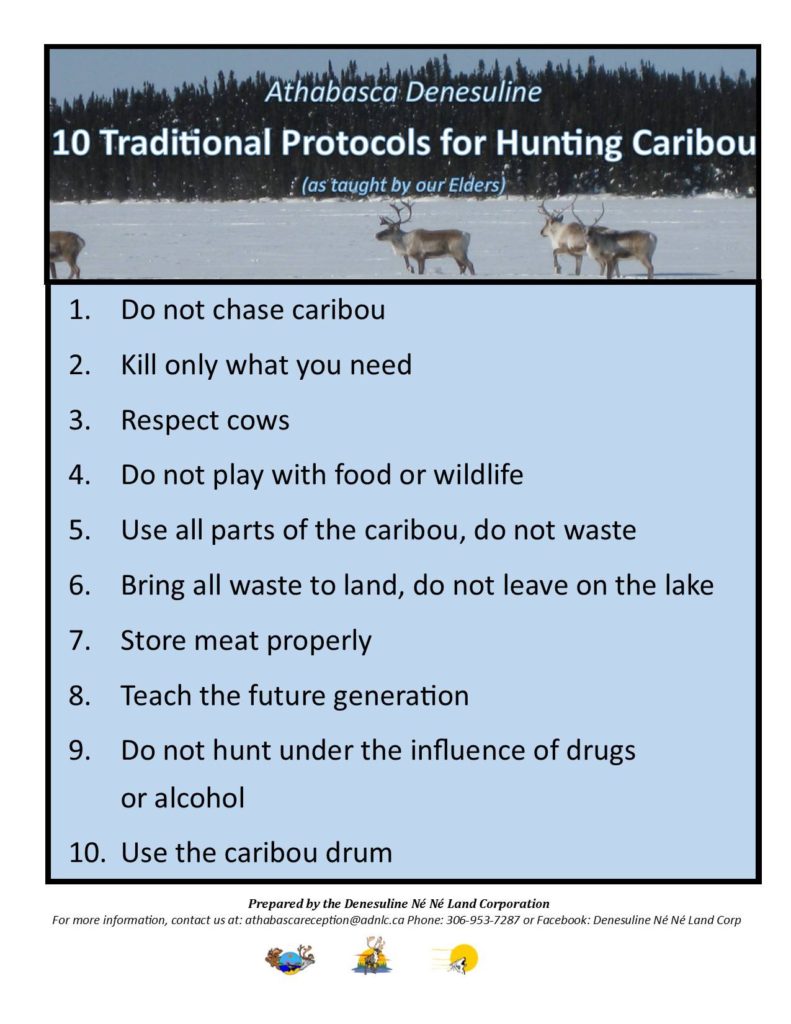CARIBOU – the Iconic Species with Many Roles

By Caitlyn Anhorn
Though caribou are an iconic species, many are in danger of disappearing across the country. This is not only troubling for the ecosystem but is very worrisome to Indigenous peoples, as relying on the caribou and the land in the future is of utmost importance.
Caribou are a cultural keystone species for Indigenous peoples; many Indigenous nations have very intricate historical and ongoing connections with caribou. For example, the Denesuline of Nuhenéné (northern Saskatchewan) are intrinsically connected with Barren-ground caribou. To them, caribou are key and central to numerous aspects of their lives.
To many Indigenous groups, Woodland caribou hold various meanings such as food, a spiritual ancestor, a gift from the Creator, a totem spirit, and a neighbour.1 Below is a general overview of caribou’s importance to Indigenous peoples, but there may be variations to this information in individual nations or communities.

Part of Age-Old Traditions
In some Indigenous communities, caribou have inherently been part of the culture for millennia, where they play an integral role in many age-old traditions.
Hunting for caribou is a continued tradition that has endured throughout the years. Caribou harvest is important for kin relationships. Often, information about the hunt is taught by Elders to younger generations. It is a central teaching that the entire animal is fully utilized, and nothing is wasted.
There are many ways that the full animal is used to avoid wasting any part of it. For example, the fur is used for clothing like shirts, hats, mitts, tents, blankets, parkas, mukluks, moccasins, bedding, etc. Antlers are used for boat frames, sleds, harnesses, toys, handles, etc. Bones are used for tools, knives, cutlery, needles, fishhooks, art, food powder, grease, etc. Organs are used for food, dog food, etc. Hooves are used for food, hunting tools, etc. The head is used for meat, soup, etc. (This list courtesy of Canadian Geographic).
Various parts of the caribou are utilized for artwork in the form of carvings, beading, and more.



Critical Social and Spiritual Role
Caribou harvest has a crucial social and spiritual role to Indigenous peoples even though it is not a recreational activity. Both kin and community relationships are developed through the shared experiences of the caribou harvest.
When there is enough caribou, hunters often share it with family and people from the community; this generous action is highly respected by the recipient. They also share harvested caribou with Elders and Traditional Knowledge Keepers to demonstrate honour and respect.
Numerous protocols and values help guide the caribou hunt, including a spiritual connection with the land and the Creator.
A Healthy Food Source
People in northern Saskatchewan continue to rely on caribou meat as a healthy source of protein with many nutrients and little fat. Caribou is a very highly valued meat source that is harvested by people in the communities. They hunt as a form of subsistence, partially because of how expensive grocery stores are.1
It is very expensive to buy food from a grocery store in the northern communities of Saskatchewan. Unless subsidies are available, it is cheaper to buy junk food than healthy fresh foods such as meat, fruits, and vegetables. Also, many people who live in this area have been living off the land for millennia, so it is crucial that the ability to live off the land remains.



Though this information is separated by subtitles, the importance of caribou to Indigenous peoples is all interconnected. Caribou play a large role in many of their lives and traditions to this day.
Keep reading here:
(1) Cultural and Ecological Value of Boreal Woodland Caribou Habitat
Caribou in Canada: Northern significance – First Nations relationship with caribou
Dene are Caribou: Caribou are Dene
What’s On Our Quarter? The past and future of Canadian Caribou
